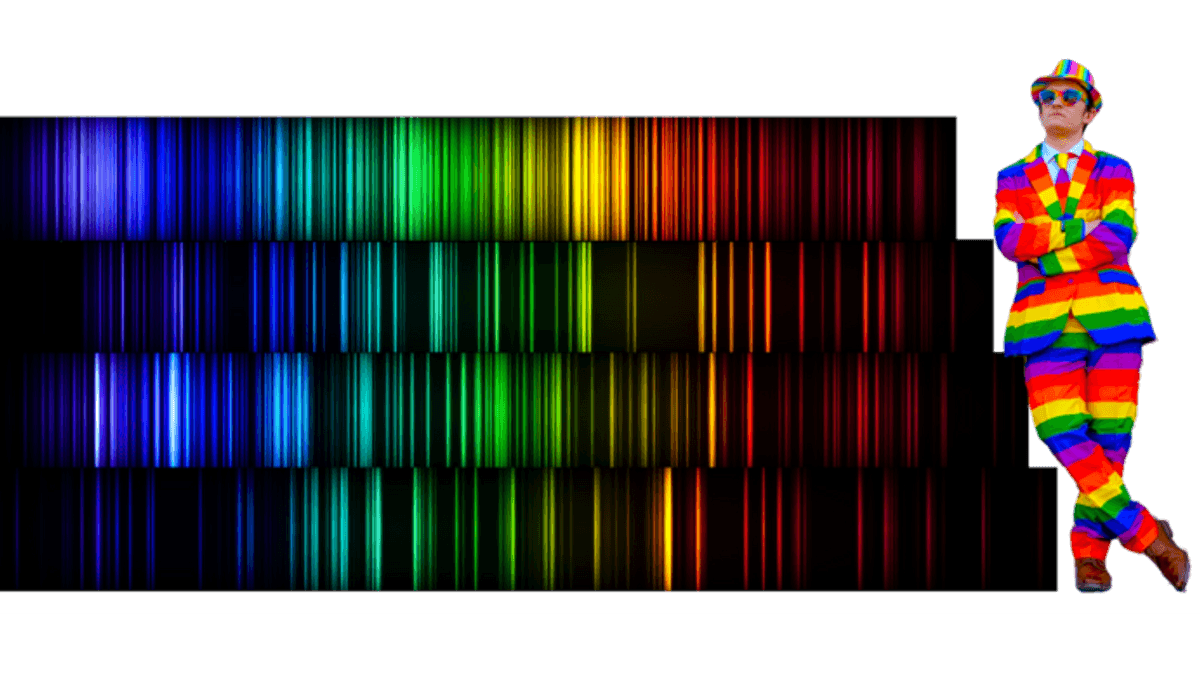
The unique radiation emitted by heated or electrified elements has been converted into sound, enabling us to hear the distinctive chord each element produces. Although the idea has been tried before, advances in technology have now made it possible for a far more complete and subtle sonification of the periodic table.
When elements are energized electrons can jump to higher energy levels. Eventually, they return to their ground state, releasing a photon in the process. The wavelength of the photon depends on the size of the energy gap between the excited state and the ground state – more energy produces higher frequency/shorter wavelength light.
The discovery of this fact has proven crucial for our understanding of the universe. We can identify the elements in a star billions of light-years away from the distinctive wavelengths it emits, known as its emission spectra. At the American Chemical Society’s Spring Conference over the weekend, the University of Indiana’s W. Walker Smith demonstrated the result if every element’s electromagnetic spectrum is converted to sound.
Smith uses his work to teach students about emission spectra and is turning it into an exhibit at the WonderLab Museum in Bloomington, Indiana. “I want to create an interactive, real-time musical periodic table, which allows both children and adults to select an element and see a display of its visible light spectrum and hear it at the same time,” he said in a statement.
To allow for the dramatic differences between the frequencies at which we see, and those at which we hear, Smith multiplied the visible light frequencies by 10-12, converting the rainbow into an octave in the most sensitive part of the human range of hearing.
Smith is not the first to come up with the idea. More ambitious conversion of data to sound was central to Douglas Adams’ science fiction classic Dirk Gently’s Holistic Detective Agency, for example. However, predecessors usually tried to play elements’ spectra on the piano, which doesn’t have nearly enough notes to capture the subtle differences between nearby wavelengths.
Some transitions are much more common than others, making for brighter emission lines, which Smith converted to into greater volume, while still including rarer jumps. Each element can have all its lines played together to create a chord, but Smith also performs melodies by playing an element in sequence.
Some elements produce thousands of frequencies, creating a risk of sensory overload, but Smith’s managed a much richer soundscape than previous efforts, consulting Professor David Clemmer and Professor Chi Wang of the chemistry and music departments, respectively, at Indiana University.
“Some of the notes sound out of tune, but Smith has kept true to that in this translation of the elements into music,” Clemmer said.
“The decisions as to what’s vital to preserve when doing data sonification are both challenging and rewarding. And Smith did a great job making such decisions from a musical standpoint,” Wang added.
Besides the teaching benefits, and the fun, Smith hopes to put the work to use, allowing people with visual impairments to familiarize themselves with elements’ spectra. It might even prove an easier way to distinguish between transition metals, whose spectra can be confusingly similar.
Smith is also performing a show “The Sound of Molecules” demonstrating how the sounds of individual elements can combine.
Elements’ emissions can extend far beyond the wavelengths we can see – part of the reason the JWST operates in the near-infrared is because that’s the best place to identify many molecules’ spectra. Extending Smith’s work into these frequencies would exploit the fact we can hear over a much wider range of frequencies than we can see.
Source Link: The Periodic Table Has Been Sonified And Every Element Sounds Unique